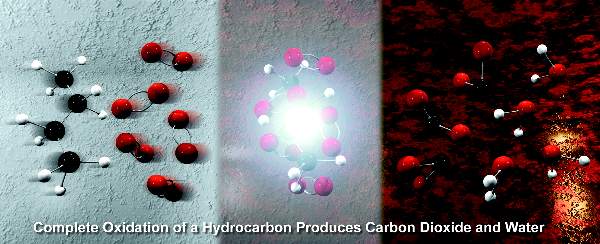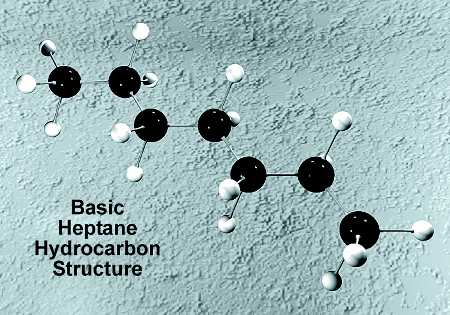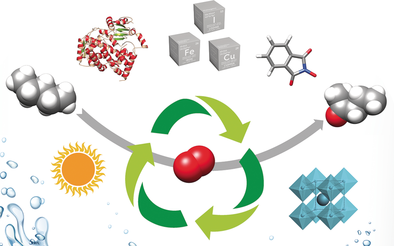Oxidation numbers are one of the most useful concepts for working out how elements behave in chemical reactions without having to work out electron-half-equations. All of the following are oxidation except state of an element can be determined from the formula of its compounds, for example copper sulphate, CuSO4.
An atom’s oxidation number is equal to its charge, +1 or -1 for monatomic ions like Na+ and Cl-. The only exception to this rule is oxygen bonded with fluorine (dioxygen difluoride).

Metal Hydrides
Metal hydrides are a group of substances that contain a metal cation (M+) and one or more hydrogen atoms (H-). These compounds form by the reaction of a low valent metal complex with dihydrogen gas at high pressure to give a solid. This type of hydride can then be decompressed under ambient conditions to release the hydrogen. This is a powerful reversible process that opens up the possibility of using hydrides as an energy storage medium.
The hydrides of the main-group metals and their transition metal cousins have excellent hydrogen storage capacity and can be used at ambient temperature for hydrogen release. This makes them an ideal choice for hydrogen-fuel cells.
These compounds have the characteristic that a hydrogen atom is bound to a central metal center with a very strong bond. As a result they are very stable and can be handled under normal conditions. They are also a great source of H- for organometallic reactions. The use of a main-group hydride, such as borohydride or aluminum hydride, with a complex of a low-valent metal to carry out a nucleophilic substitution is a common procedure in organic synthesis.
The oxidation number of an atom in pure elements and their compounds is usually determined by examining the electronegativity values of the atomic nuclei. This information is used to distinguish oxidized and reduced atoms in redox reactions. Generally, an uncombined atom has an oxidation number of zero, while an atom bonded with oxygen has a positive oxidation number, and hydrogen has a negative oxidation number. This is why hydrogen atoms in hydrides have a negative oxidation state.
Peroxides
Peroxides are a class of chemical compounds in which two oxygen atoms are linked together with a single covalent bond. Both organic and inorganic peroxides exist, including hydrogen peroxide (HO2), a common bleaching agent, and peroxysulfuric acid (powder form), which is used as an initiator of polymerization reactions. Inorganic peroxides are also found as salts such as sodium peroxide (Na2O2) and barium peroxide (BaO2).
Chemicals that can form explosive peroxides over time due to autoxidation are called peroxide forming chemicals. These chemicals are often labeled as such and contain low concentrations of an inhibitor to slow the formation of peroxides. However, heat and prolonged storage can cause the depletion of these inhibitors, resulting in explosive chemical decomposition. These chemicals should only be purchased in small quantities and stored at ambient temperature, away from light and heat sources and segregated from incompatible substances. They should be kept in a well ventilated area such as a laboratory fume hood.
If a chemical is peroxide forming, it must be tested frequently for the presence of an inhibitor. Most test kits contain a few mL of the chemical and an equal volume of acetic acid. If the solution turns yellow to brown, it contains peroxide and the inhibitor has depleted. If a kit is not available, the user can mix the chemical with a few drops of five percent potassium iodide and shake to detect the presence of peroxide. This method is not as accurate as a test kit, but is much faster than the traditional method of using a redox indicator paper.
Metal Oxides
Metal oxides are the most common and widely used metal compounds. These compounds form in redox reactions between metals and oxygen molecules. The formation of metal oxides is a fundamental process in chemical manufacturing, in reducing carbon dioxide emissions from fossil fuel combustion and in the conversion of biomass.
All metals except fluorine and hydrogen form at least one binary oxide with oxygen. The all of the following are oxidation except number of the central metal atom determines whether the oxide is basic or acidic, with more electropositive metals having more basic oxides and less electronegative metals having more acidic oxides.
The most common metal oxides are the inert silica and alumina, which are used in manufacturing glass and ceramics, respectively. They are also a raw material in semiconductor production. The oxides of several other metals are important for industrial processes, such as thermite reactions in metal alloys, iron oxide as a passivation layer on commercial aluminum foil and titanium oxide in surgical sutures.
Other more complex oxides form in redox reactions between copper and other metals and oxygen atoms. These compounds, such as the tetrahydrates (CuSO45H2O) of copper and the blue vitriol or verdigris of copper(II), are used in fungicides and algicides and in ink pigments.
Oxides are a major component of Earth’s atmosphere, forming the majority of its ozone layer and absorbing part of its solar ultraviolet radiation. They also play a significant role in many redox reactions, including carbon dioxide and nitrogen oxide production from fossil fuel combustion, sulfur dioxide and nitrous oxide emission from volcanoes and nitric oxide production by soil bacteria. The ability of these oxides to lose or gain electrons under redox conditions is key to their performance in many industrial and environmental processes, including carbon capture and utilisation, thermochemical energy storage and hydrogen production for fuel cell vehicles.

Alkali Metals
Group 1 of the Periodic Table includes the alkali metals, which are soft silvery metals that tarnish when exposed to air. They have low melting and boiling points and are less dense than most elements. They have large atomic radii and low ionization energies, which contribute to their high reactiveness. These factors mean that the atoms of the alkali metals have only one electron in their outermost shell, so it takes little energy for them to donate this electron to reach a point of stability (an oxidation state of +1).
This high level of reactivity also makes it difficult to find the elemental form of the alkali metals in nature, which is why most of them exist in conjunction with other metals. The exception is hydrogen, which can be found in its pure metallic state. The reactivity of the alkali metals increases down the group, with lithium (Li) being the least reactive and francium (Fr) the most.
When the alkali metals react with oxygen, they produce oxides, peroxides and superoxides. In addition, they react with water to produce hydroxides. Except for beryllium, all of these oxides and hydroxides are strongly basic.
When working with these highly reactive metals, it is important to use proper safety precautions, such as working in a certified laboratory fume hood. This will ensure that the work area is free of extraneous flammable materials, sparks and flames. In addition, it is recommended that air-sensitive techniques be used whenever possible. This will prevent the accidental reaction of these chemicals with air, which can lead to fire. For example, it is good practice to put solid materials (such as gloves or paper towels) contaminated with small amounts of an alkali metal in metal cans, which will protect them from the delayed reaction of the residual metal with air.
Alkaline Earth Metals
All six of the elements in Group 2 (or Group IIA under older IUPAC nomenclature) of the periodic table are called alkaline earth metals. Unlike the alkali metals, they have two electrons in their outermost valence shells, and as such are less reactive than the alkali metals. They all react with oxygen to form oxides, but they also react with water to produce their respective hydroxides and hydrogen gas. They are harder than alkali metals and they are also denser.

Like alkali metals, they all have low electron affinities and low electronegativities. As a result, they readily lose their valence electrons to form divalent cations. These are metals that can form ionic bonds, the strongest form of chemical bonding. They have smaller atomic radii than the alkali metals, and this is why they are denser.
Four of the Group 2 elements, magnesium (Mg), calcium (Ca), strontium (Sr), and barium (Ba) were first isolated in the early nineteenth century by English chemist Sir Humphry Davy. He used a similar method to isolate sodium and potassium from the alkali metal family.
As with the alkali metals, elemental Ca, Sr, and Ba are very reactive with air and water in their pure metallic form. They are never found in nature in their elemental state, and must be separated from the ores by high temperatures or other methods. These metals are also very soluble in water, and the reaction of Ca and Sr with water results in the formation of hydrogen gas. These gases must be released under a mineral oil bath or a dry atmosphere. They are also brittle, and their compounds tarnish in air. Unlike the alkali metals, however, they do not react with molten glass.
1. What is oxidation?
Oxidation is a chemical process in which a substance loses electrons, leading to an increase in its oxidation state. It is often associated with the addition of oxygen or the removal of hydrogen.
2. What is reduction?
Reduction is the opposite of oxidation. It involves a substance gaining electrons, resulting in a decrease in its oxidation state.
3. How do I determine if a reaction involves oxidation?
Look for changes in oxidation states of elements in the reactants and products. If an element’s oxidation state increases, it is undergoing oxidation.
4. What are some common examples of oxidation reactions?
- Rust formation: Iron reacts with oxygen to form iron oxide (rust).
- Combustion: Hydrocarbons react with oxygen to produce carbon dioxide and water.
- Oxidation of metals: Metal surfaces can tarnish or corrode when exposed to air.
5. Are all reactions involving oxygen oxidation reactions? No, not all reactions involving oxygen are oxidation reactions. Oxidation specifically refers to the loss of electrons by a substance. Some reactions with oxygen may involve reductions instead.
6. How can I identify the oxidizing agent and reducing agent in a reaction? The oxidizing agent is the substance that causes oxidation by accepting electrons from another substance. The reducing agent is the substance that undergoes oxidation and donates electrons to another substance.
7. Can oxidation occur without oxygen being involved?
Yes, oxidation can occur without oxygen. It refers to any process where an element loses electrons, regardless of whether oxygen is directly involved.
8. What is the role of oxidation in corrosion?
Corrosion is a type of oxidation reaction that occurs between a metal and its environment, often involving moisture and other chemicals. The metal loses electrons and forms oxides, leading to the deterioration of the metal.
9. Is the oxidation number the same as the charge of an ion?
The oxidation number is not always the same as the charge of an ion. While the oxidation number represents the hypothetical charge an atom would have if the compound were ionic, it doesn’t necessarily reflect the actual charge of the ion in the compound.
10. How is oxidation used in everyday life?
Oxidation is involved in various processes, including cooking (browning of food), battery operation, and metabolism in living organisms.
Remember that while these FAQs can provide a basic understanding of oxidation, the concept can become more complex as you delve deeper into chemistry and its applications.

